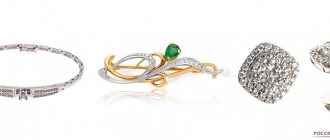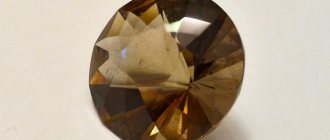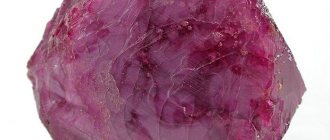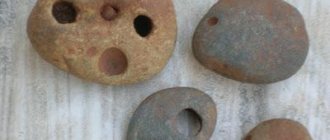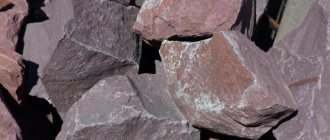- home
- Articles
- How to calculate the weight of a granite slab
Granite is one of the hardest and densest minerals.
Its specific gravity is about 2600-2800 kg/m3. High density allows the stone to withstand heavy operating loads and maintain strength in adverse weather conditions. For the implementation of projects, such an indicator as the weight of the granite slab, or rather the cladding made from it, is important. The calculations use the mass of 1 m2 of stone or one paving element, taking into account the thickness of the finishing material.
What are the advantages of greater mass and density?
- Low water absorption. Granite hardly absorbs water, so it can withstand hundreds of freezing and thawing cycles without damage.
- Abrasion resistance. Granite slab coatings are used in public buildings, on city streets, metro stations and other facilities with increased load.
- Mechanical strength. The stone is resistant to chips, scratches, and is difficult to break or damage. Slabs 50 mm thick can withstand the passage of passenger vehicles.
- Stability. Granite cladding retains its dimensions and clear geometry even with changes in humidity and temperature. The plates do not move from vibrations and impacts. The cladding on horizontal surfaces is additionally fixed by its own heavy weight.
Regulatory documents in the field of ensuring the uniformity of measurements
GOST R 8.563-2009 State system for ensuring the uniformity of measurements. Measurement techniques (methods) GOST R ISO 5725-2002 Accuracy (correctness and precision) of measurement methods and results GOST R 53228-2008 Non-automatic scales. Part 1. Metrological and technical requirements. Tests GOST 7328-2001 Weights. General technical conditions GOST 24104-2001 Laboratory scales. General technical requirements RMG 76-2004 State system for ensuring the uniformity of measurements. Internal quality control of the results of quantitative chemical analysis GOST 12.1.012-2004 System of occupational safety standards. Vibration safety. General requirements
On the terminology used in the field of ensuring the uniformity of measurements
Repeatability limit: a value that, with a confidence probability of 95%, is not exceeded by the absolute value of the difference between the results of two measurements (or tests) obtained under repeatability conditions (GOST R ISO 5725-1). Limit of intra-laboratory precision: the absolute discrepancy allowed for the accepted probability P between two analytical results obtained under conditions of intra-laboratory precision (RMG 76). Control measurements: measurements carried out to verify the compliance of the numerical values of the controlled parameter (or several parameters) with the values established in regulatory documents. They include the actual measurements and mathematical analysis of the results obtained.
Characteristics of granite
Granite has gained popularity in construction due to its great strength. A comparison with the closest competitive material, marble, showed that granite has approximately twice the strength. This is due to the presence of quartz in the composition. Due to its origin, this type of material is not afraid of temperature changes; granite can withstand both frosts with temperature fluctuations of -60 degrees Celsius and heat with temperatures exceeding 50 degrees Celsius. In general, the temperature difference of granite is more than 100 degrees Celsius, and this material will not lose its properties. Also, one of their main features is their great resistance to fungal infections and fires. The melting point of this type is +700 degrees Celsius.
The level of moisture absorption also has a great influence on strength. In this comparison, granite has no equal among other materials. This indicator varies depending on the location of extraction, while the depth and density of the rock affects the scope of application of this type of building materials.
Where to buy granite slabs
Natural stone is an expensive finishing material. It is important to choose a reliable supplier who guarantees product quality and complies with the requirements for careful transportation of granite slabs. The seller must have certificates of conformity. They also pay attention to logistics: the fewer movements and overloads that need to be made for delivery, the lower the risk of damage to the stone and the occurrence of hidden defects.
Kurty LLP offers to buy slabs from Kurty granite at competitive prices. The assortment includes coatings with heat-treated, polished, polished, sawn surfaces, and “Skala” facing stone. Products are certified. As a manufacturer, we control the slab manufacturing process from the moment the stone is extracted from the quarry to shipment to the buyer, therefore we guarantee quality.
How to determine the mass of a granite slab
To calculate, you need to know the density of the stone and the dimensions of one element. The calculation is carried out according to the general formula:
m = a*b*h*ρ.
- m – mass of granite, kg/m2;
- a – slab width, m;
- b – length, m;
- h – slab height, m;
- ρ – rock density, kg/m3.
Using the formula, let's try to find the weight of a granite slab 1000*500*50 mm. In the calculations we use the density value of the stone from the Kurtinskoe deposit - 2.64 t/m3:
m = 1*0.5*0.05*2640 = 66 kg.
The weight of a slab measuring 1000*600*20 mm will be equal to:
m = 1*0.6*0.02*2640 = 31.68 kg.
Let's calculate the weight of a smaller slab, for example, 300*300*20:
m = 0.3*0.3*0.02*2640 = 4.75 kg.
To convert the obtained value into kg/m2 of coating, it is necessary to calculate how many slabs will be required to cover such an area:
n = 1/(0.3*0.3) = 12 slabs.
Accordingly, the mass of 1 m2 of cladding will be equal to 12 * 4.75 or 57 kg.
Sometimes the weight of the cladding of a certain area is important. Then in the formula the expression a*b is replaced by the value S (m2). The calculation is simplified. For example, let’s determine the weight of 30 mm granite slabs on an area of 50 m2:
m = 50*0.03*2640 = 3960 kg.
About the requirements for measurement conditions
When performing measurements, the following conditions are observed: — ambient air temperature, ̊С ………….……20+5, — relative air humidity, % …………………65+15. The scales should be located on a work table that is resistant to local vibration. In addition, the workplace when performing mass measurements must be protected from air currents and vibrations; There should be no sources of magnetic fields near the workplace.
Carat of precious metals
The term "carat" is also used to define the purity of precious metals or the amount of precious metal in an alloy. The hallmark carat is designated by the letter "K" or "kt".
Today, countries such as the USA and Canada use the karat system. The pure metal alloy has a purity of 24 carats. Depending on the proportion of noble metal content in the alloy, samples are distinguished:
- 23K - the mass of the noble metal is 0.958 of the weight of the alloy.
- 22K – 0.916.
- 21K – 0.875.
- 18K – 0.750.
- 14K – 0.583.
- 12K – 0.500.
- 9K – 0.375.
Correspondence of metric and carat assay systems
In the countries of the former Soviet Union, since 1927, the metric system of measures has been used, which determines the assay of various alloys by the ratio of the amount of noble metal in 1 mg of the alloy. Various hallmarks are defined for platinum, gold, silver and palladium. The karat standard is easily converted to the metric system with two simple mathematical steps. To do this, the carat value is divided by 24 and multiplied by 1000.
The metric testing system is used by dozens of countries in Europe and the world. Ireland uses both hallmarks on the product mark. England puts a metric measure on the stamp, but the description of the product (exclusively made of gold) also allows for a karat standard.


